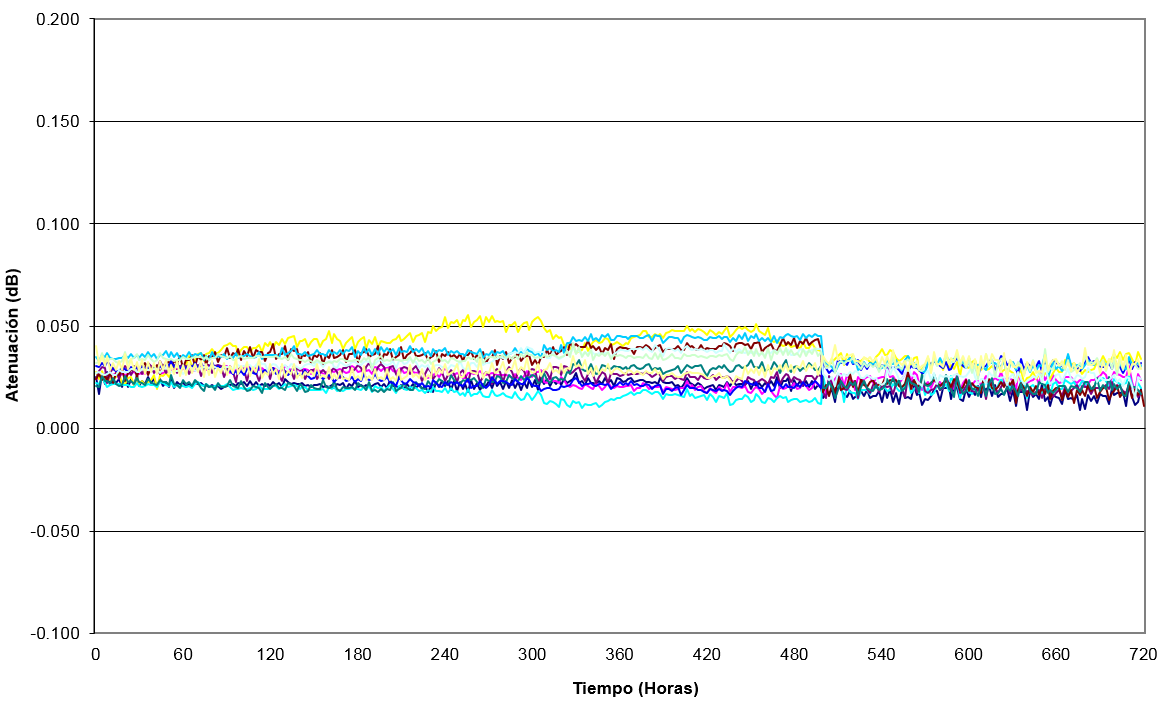Weibull method for environmental test time reduction for optical splitter
DOI:
https://doi.org/10.37636/recit.v23137143Keywords:
Life tests, Temperature cycle test, Coffin-Manson model, Reliability, Weibull distribution.Abstract
This article develops a life test plan for a standard optical splitter, which provides insight into its lifetime and reliability R (t). According to the GR-2866 standard, the environmental variables to be analyzed are temperature (T) and humidity (H) and 12 samples must be run. During the analysis, 720 cycles of T and H were performed during a 30-day trial period (Temp. = 85 °, -40 ° and Hum. = 85%). Thus, in order to reduce the test time, using the Taguchi method, the most significant temperature range was determined. With this new test temperature range (T = 100 °, -45 ° and H = 85%) in the Coffin-Manson model, the new test time was 10.33 days. The experimental tests were carried out using an environmental camera and optical equipment that allowed measuring the amount of attenuation in decibels (dB) caused by stress from temperature and humidity. For this new test range the Weibull parameters are β = 3.19 and η = 92.47.Downloads
References
Anon, 2017. SilexFiber. http://silexfiber.com/splitters-opticos-filtros-wdms/ [Último acceso: 29 March 2019].
S. Kangwon, & P. Rong, "ALTopt: An R Package for Optimal Experimental Design of Accelerated Life Testing". R Journal, 7/2(1), pp. 177-188, 2015. https://doi.org/10.32614/RJ-2015-029 DOI: https://doi.org/10.32614/RJ-2015-029
W. Nelson, "A bibliography of accelerated test plans". IEEE Transactions on Reliability, 54(2), pp. 194-197, 2005. https://doi.org/10.1109/TR.2005.847247 DOI: https://doi.org/10.1109/TR.2005.847247
SlideShare, 2017. https://es.slideshare.net/saoryy/modelos-de-celeracin-de-vida-arrhenius-eyring
DES, 2018. DES. https://www.desolutions.com/blog/2014/10/temperature-cycling-testing-coffin-manson-equation/
M. R. Piña-Monarrez, "Weibull stress distribution for static mechanical stress and its stress/strength analysis". Quality and Reliability Engineering International, Vol. 34(2), pp. 229-244, 2018. https://doi.org/10.1002/qre.2251 DOI: https://doi.org/10.1002/qre.2251
T. Technologies, Telcordia Technologies Generic Requirements GR-2866. Piscataway: Telcordia, 2007. http://telecom-info.telcordia.com/site-cgi/ido/docs.cgi?ID=SEARCH&DOCUMENT=GR
S. L., Chan, "Basic structural design considerations and properties of glass and aluminum structures". Polytechnic University, pp. 144-172, 2002. https://pdfs.semanticscholar.org/e2a8/1406fb6223143f4c60467cf85c3038182eca.pdf
ISO 16750-1 appendix B chapter B.3.2.4. http://read.pudn.com/downloads226/ebook/1062022/ISO16750-1.pdf

Published
How to Cite
Issue
Section
Categories
License
Copyright (c) 2019 Jesús Manuel Barraza-Contreras, Manuel Román Piña-Monarrez, Manuel Iván Rodríguez Borbón

This work is licensed under a Creative Commons Attribution 4.0 International License.
The authors who publish in this journal accept the following conditions:
The authors retain the copyright and assign to the journal the right of the first publication, with the work registered with the Creative Commons Attribution license 4.0, which allows third parties to use what is published as long as they mention the authorship of the work and the first publication in this magazine.
Authors may make other independent and additional contractual agreements for the non-exclusive distribution of the version of the article published in this journal (eg, include it in an institutional repository or publish it in a book) as long as they clearly indicate that the work it was first published in this magazine.
Authors are allowed and encouraged to share their work online (for example: in institutional repositories or personal web pages) before and during the manuscript submission process, as it can lead to productive exchanges, greater and more quick citation of published work (see The Effect of Open Access).











